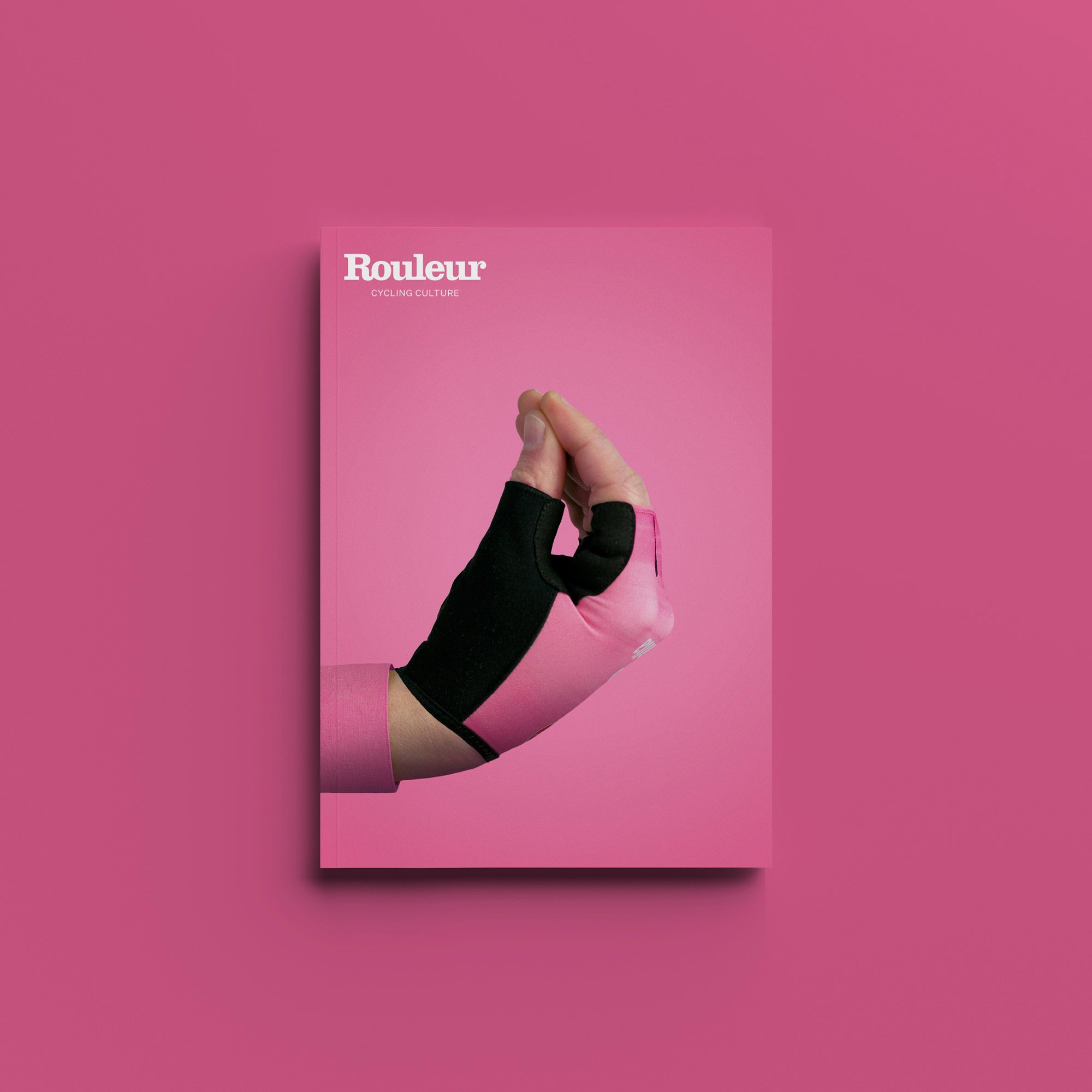Almost a year after it was first spotted being ridden by the Decathlon-AG2R La Mondiale team, the Van Rysel RCR-F aero bike has finally been officially launched, with all the details and specifications and claims made public. And, as a matter of course, it will be available to buy in Decathlon stores as of today.
Last year all the talk was of bike brands consolidating their aero and climbing bikes to make ‘aero all-rounders’ like the Specialized Tarmac SL8 or the Pinarello Dogma F and – at the time – the Colnago V4RS. It seemed as though Van Rysel was going in the opposite direction, even the wrong direction. But when I visited B’Twin Village in Lille last spring, chief product officer Yann Le Fraillec explained: “At the beginning of the project we were aware that to make a lightweight climbing bike and a very good aero bike at the same time is impossible. To launch two high-end top models at the same time would be crazy for us. So I preferred to focus on an aero-light bike that can perform in 80 per cent of race conditions.” But the fact that an aero bike was in the pipeline was never a secret. Later that day I asked Van Rysel’s chief marketing officer Maxime Delabre why they were developing a separate aero bike when other brands weren’t. “Because we have to. We need to show people that we are the best,” he replied. “If we don’t, they will just go and buy a Specialized or a Trek.”

It turned out to be a clever strategy. The original all-rounder ‘aero-light’ RCR Pro got rave reviews, including from Rouleur, and made headlines as the ‘WorldTour’s most affordable bike’. And sold out from Decathlon’s stores immediately. And then, while Van Rysel kept teasing its unreleased aero bike, other WorldTour brands including Canyon and Colnago launched their own new aero bikes and suddenly aero bikes were back and it all made sense.
So, the questions everybody has wanted answering ever since spotting Felix Gall’s prototype Van Rysel aero bike, ‘disguised’ with a strikingly handsome black-and-white marbled paintjob at the Tour de France, can now be answered. How fast is the Van Rysel RCR-F compared to other WorldTour bikes? Will it be the WorldTour’s most affordable aero bike?

Addressing the first one, Van Rysel says in its white paper: “By analyzing the performance of the latest innovations in professional cycling, a clear objective was established: to design the fastest aero bike in the peloton, pushing aerodynamic performance even further than the RCR.” However, it hasn’t published results of competitor testing, though it undoubtedly will have done plenty. All the comparison is against its own RCR Pro – in the same way that Colnago when it launched the Y1RS only made public details of the new aero bike’s performance against the V4RS. This is because, according to Van Rysel: “Our engineers retested the RCR in the wind tunnel, confirming its position among the best on the market. The RCR now serves as a benchmark for development.” Van Rysel says the RCR-F is 13 watts faster than the RCR-Pro. So does that make it the fastest bike in the WorldTour? It’s hard to say. Colnago said the Y1RS was 20 watts faster than its own V4RS at 50kph. Digging a bit deeper into Van Rysel’s white paper, it includes data from wind tunnel testing at different speeds, showing 13.6 watts saved at 45kph (the speed that’s usually quoted) and 20.1 watts at 55kph. As speeds are going up in pro racing, manufacturers are starting to use those higher velocities since the gap widens as power increases with the cube of the speed.

And the second question: is it the most affordable aero bike in the WorldTour? The pro replica build with Shimano Dura-Ace will retail at £10,000/€9,499/ $11,999/£10,000. That looks a little more expensive than the top-spec Canyon Aeroad CFR (£9.299) although the consumer version of the pro-team bikes has DT Swiss wheels rather than the Dura-Ace as used by Van der Poel et al and Zipp 454 NSW in the case of Kasia Niewiadoma and the Canyon//SRAM zondacrypto team. In 2025 Chinese brand XDS entered the WorldTour as Astana’s bike sponsor and although the team bike isn’t available to buy in a complete team spec – in Europe and the USA at least – with the X-Lab frame selling for £2,553 it is very unlikely that any of Van Rysel’s team bikes from now will be the most affordable in the WorldTour – or anybody else’s for that matter. However, the Van Rysel RCR-F is still at the affordable end compared to the likes of Colnago and Pinarello.
Aero features in detail
The white paper reveals: “In order to confirm the watt savings observed in CFD, Van Rysel engineers tested the best iterations in the wind tunnel. Thanks to 3D printing, the exact frame shape can be reproduced. In total, more than six bike concepts were tested to select the most efficient one. Van Rysel told us how, when developing the RCR Pro, it 3D printed prototypes in its own facility in B’Twin village and then carried them over the road to be tested at the ONERA wind tunnel. Although this time it doesn’t repeat the story, it’s highly likely that it came to the same arrangement with its neighbours, the French aerospace lab.

The savings of 13.6 watts compared with the Van Rysel RCR Pro at 45kph are broken down like this: 1.2 watts at the fork; 4.4 watts at the head tube; 1.7 watts at the down tube and 2.7 watts at the cockpit. It’s the cockpit that Van Rysel says is the “showpiece”: designed with Deda, just as the RCR Pro’s cockpit was, Van Rysel says it tested 10 different combinations before settling on the final one, which is designed specifically for the RCR-F. That’s all relatively normal, but what’s interesting is that Van Rysel says it focused on the position on the drops rather than on the hoods. “During sprints, sprinters become one with their bike. At high speed, it’s crucial to be able to grasp the drops perfectly to be as fast as possible while maintaining total control of the bike… beyond maximising grip, the Ergodrops allow riders to no longer worry about the position of their hands; they will always be in the right place, ensuring the ideal position to turn, brake, accelerate, and sprint. To top it all off, the Ergodrops orient the wrists to minimise the cyclist’s frontal surface and perfect their position against the wind.”

Since around 75% of wind drag is caused by the rider, it makes sense to emphasise the optimisation of rider position, but up until now many brands have preferred to talk about how many watts the UCI’s rule changes can save, for example. As well as the position in the drops, the ‘aero hoods’ position is also analysed down in Van Rysel’s white paper: “When a rider is in the front positions of the peloton at a constant speed of 45kph, an optimised aerodynamic position can save up to 70 watts during a steady effort,” it says.
The cockpit has a 12° flare to the drops so that the shifters are turned inwards, and Van Rysel says that “in collaboration with biomechanists, engineers have adjusted each size of the RCR-F frame with an optimised cockpit, ensuring an ideal aerodynamic position.” With the size frame sizes offered, the smallest XXS gets a 400mm width and 70mm stem, while the XL is supplied with a 440mm width and 120mm stem. This suggests that Van Rysel will not be offering a choice of cockpit size at point of purchase, as Canyon has recently done with the flagship Aeroad CFR, which could be a hindrance as these sound relatively wide for modern positions.
Frame construction and weight
There’s no frame weight quoted, although Van Rysel says that the RCR-F fully built with Shimano Dura-Ace weighs 7.5kg (compared to the 6.9kg for the RCR Pro). However, there are breakdowns in the white paper of various components that have been lightened to offset the unavoidable extra weight of deeper frame tubes. For example, a redesigned seatpost clamp saves 20g while the rear derailleur is 9g lighter than the RCR Pro’s. With titanium bolts used for certain frame components, Van Rysel says a total of 37g has been saved.

The frame itself is built with a blend of fibres with a “Super High Mod” 60T carbon plays a key role in achieving a low weight without compromising overall rigidity, according to Van Rysel. There’s also 40T carbon used in the construction. Van Rysel claims the RCR-F is 7% stiffer at the front than the RCR Pro, noting that this is the most stressed area during sprints.
Prices and specifications
There will be four builds available, starting with Shimano 105 Di2 at £5,000/€5,499 going through Ultegra Di2 at £7,000/€6,499 and then two Dura-Ace builds both at £10,000/€9,499. One of these is the pro replica and the other is the ‘Signature’. It’s the same frame (no lower-modulus carbon for the 105 version, for example) and all bikes get the same SwissSide Hadron CLA625 wheels with a 62mm rim depth, and the Deda integrated cockpit.
We’ve been promised a test bike review and we’re looking forward to seeing how it performs compared with the RCR Pro, which was super impressive. For more information check out Van Rysel’s website.
































